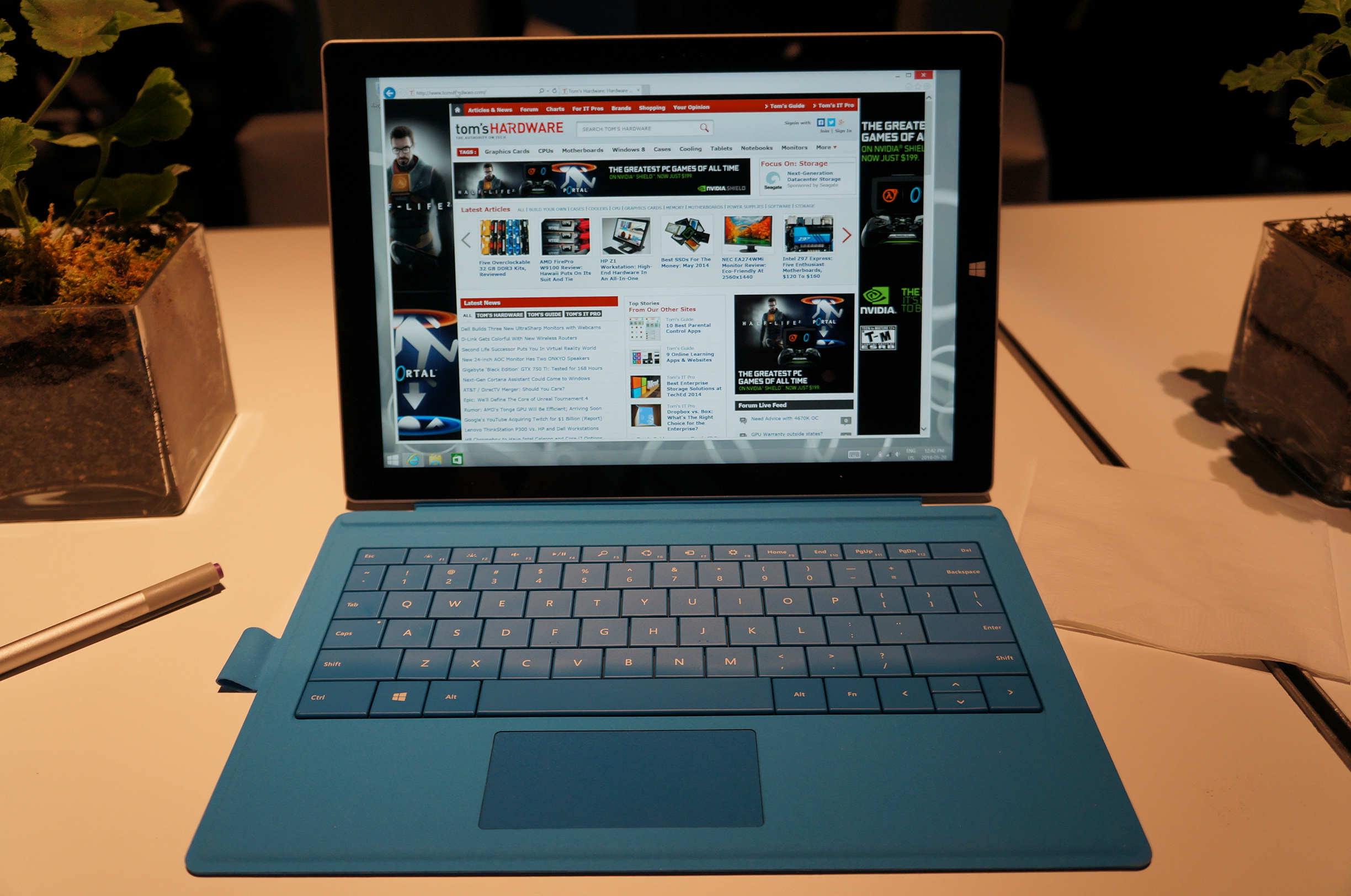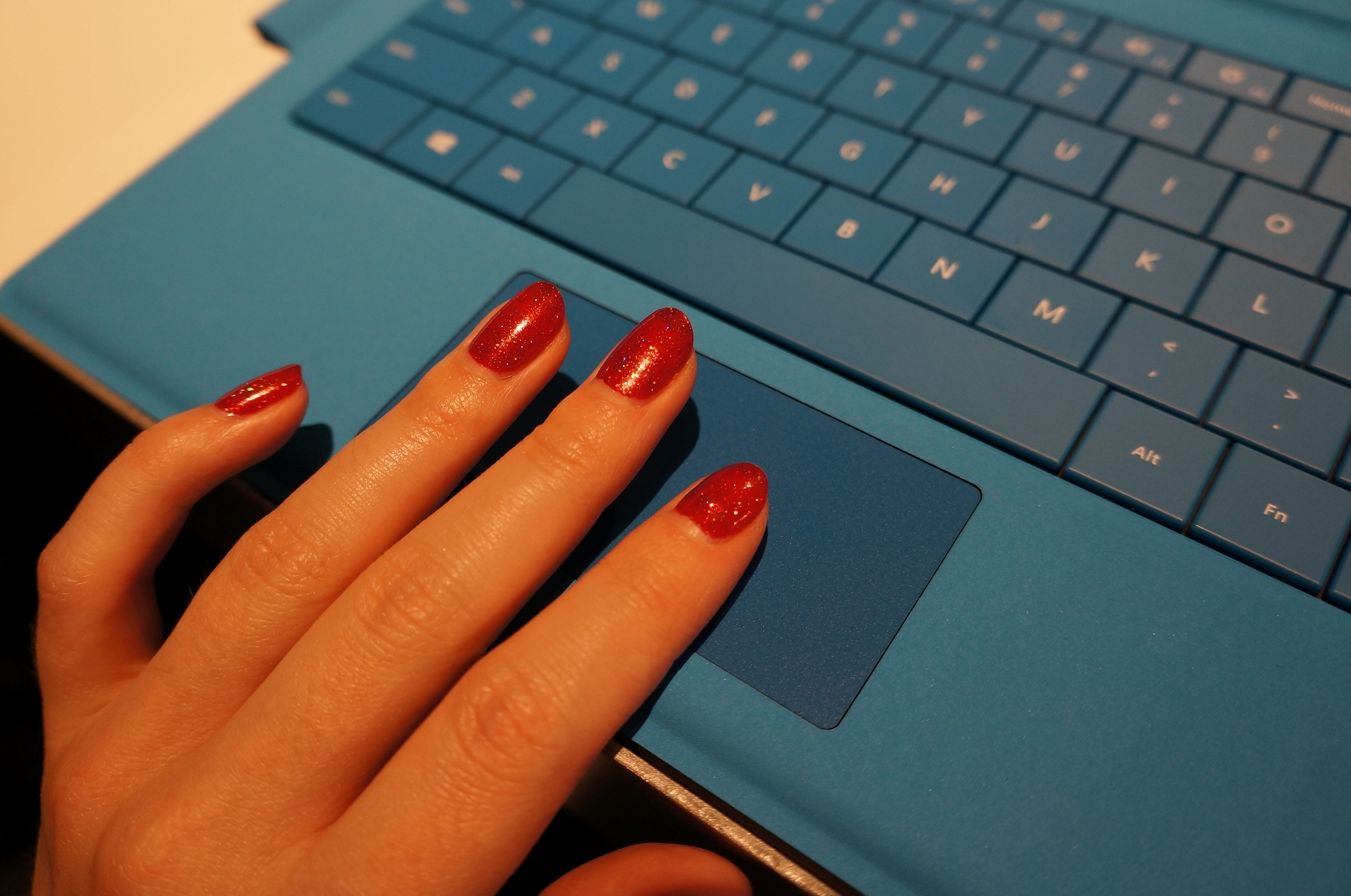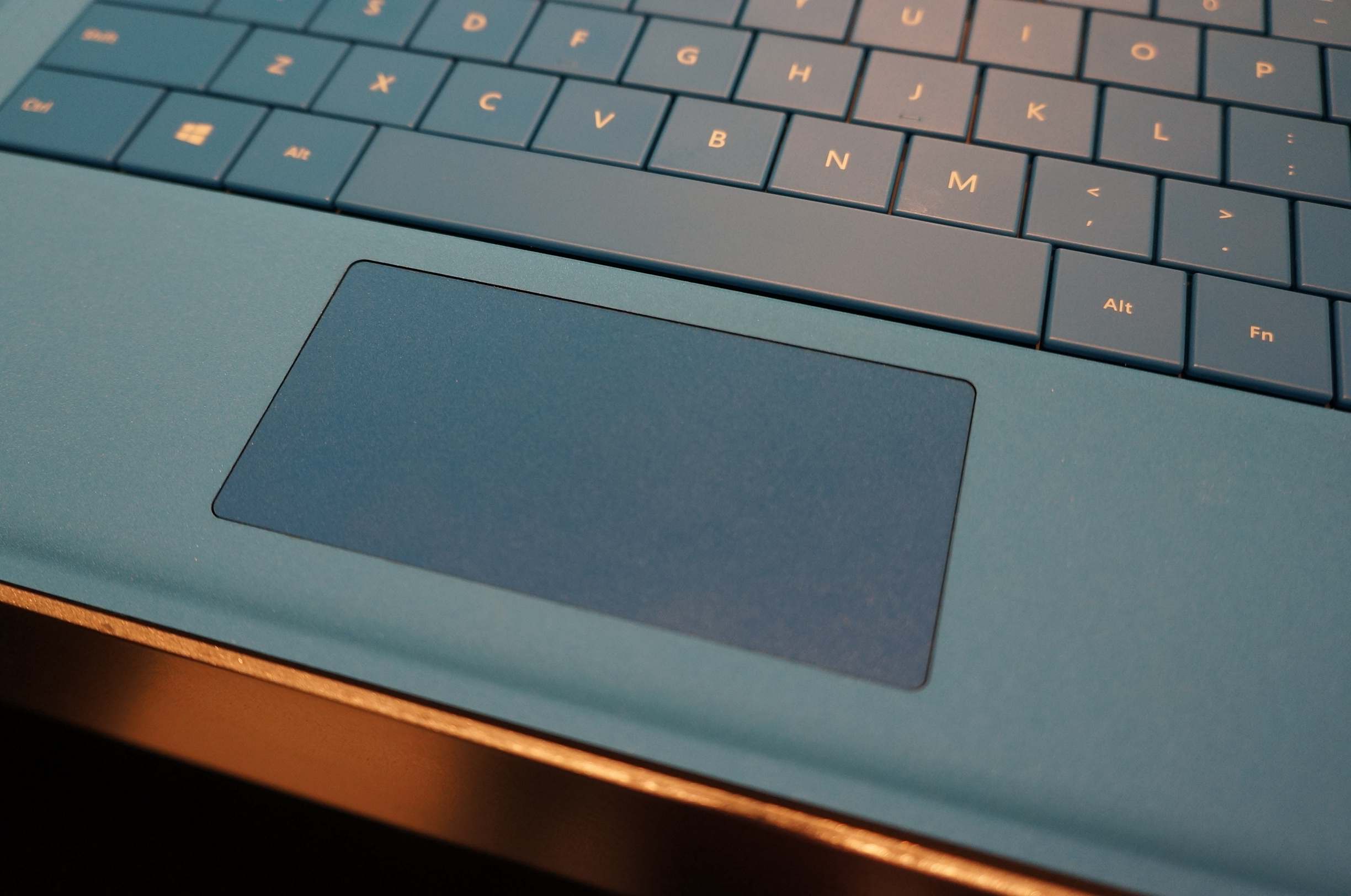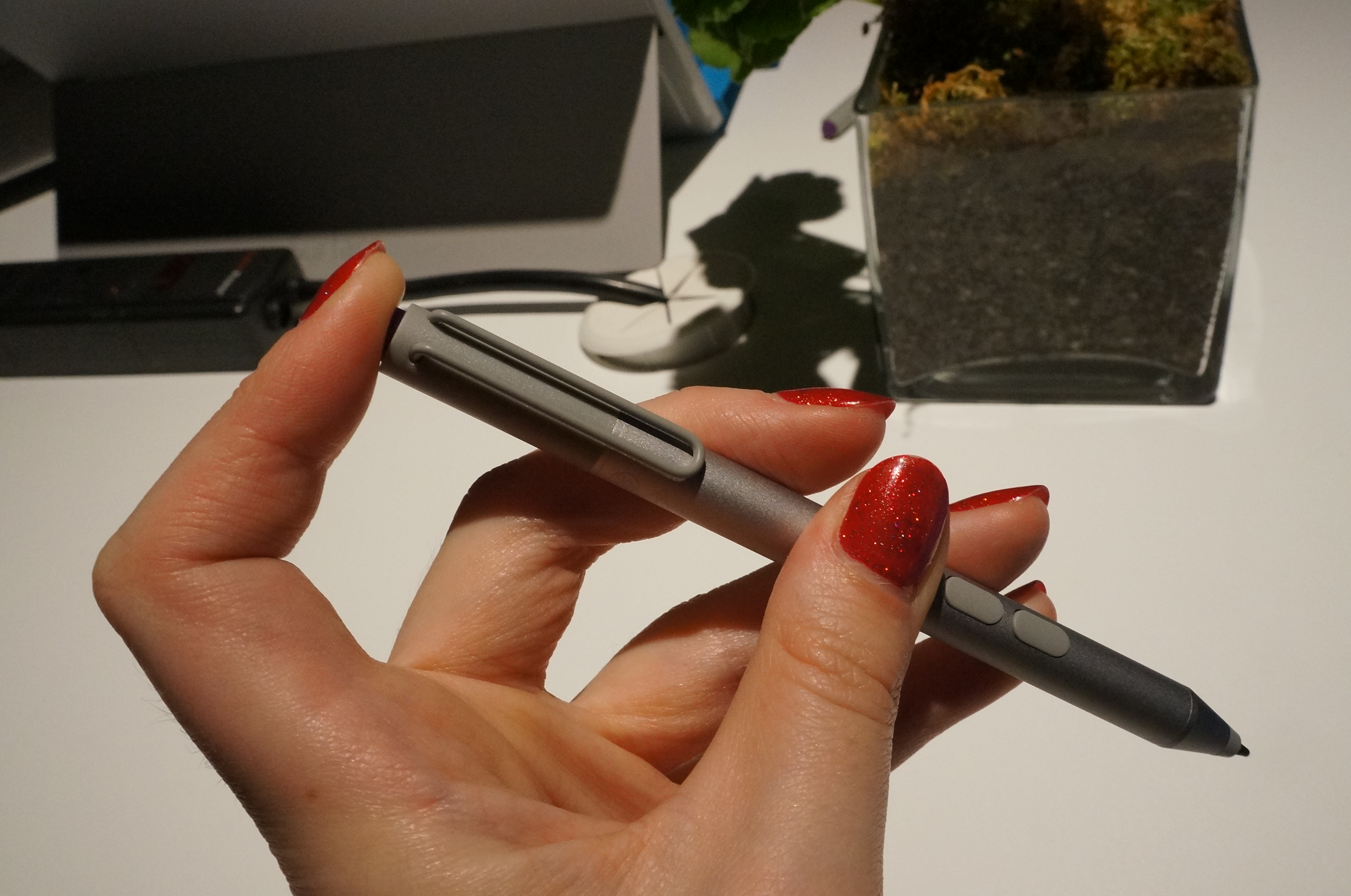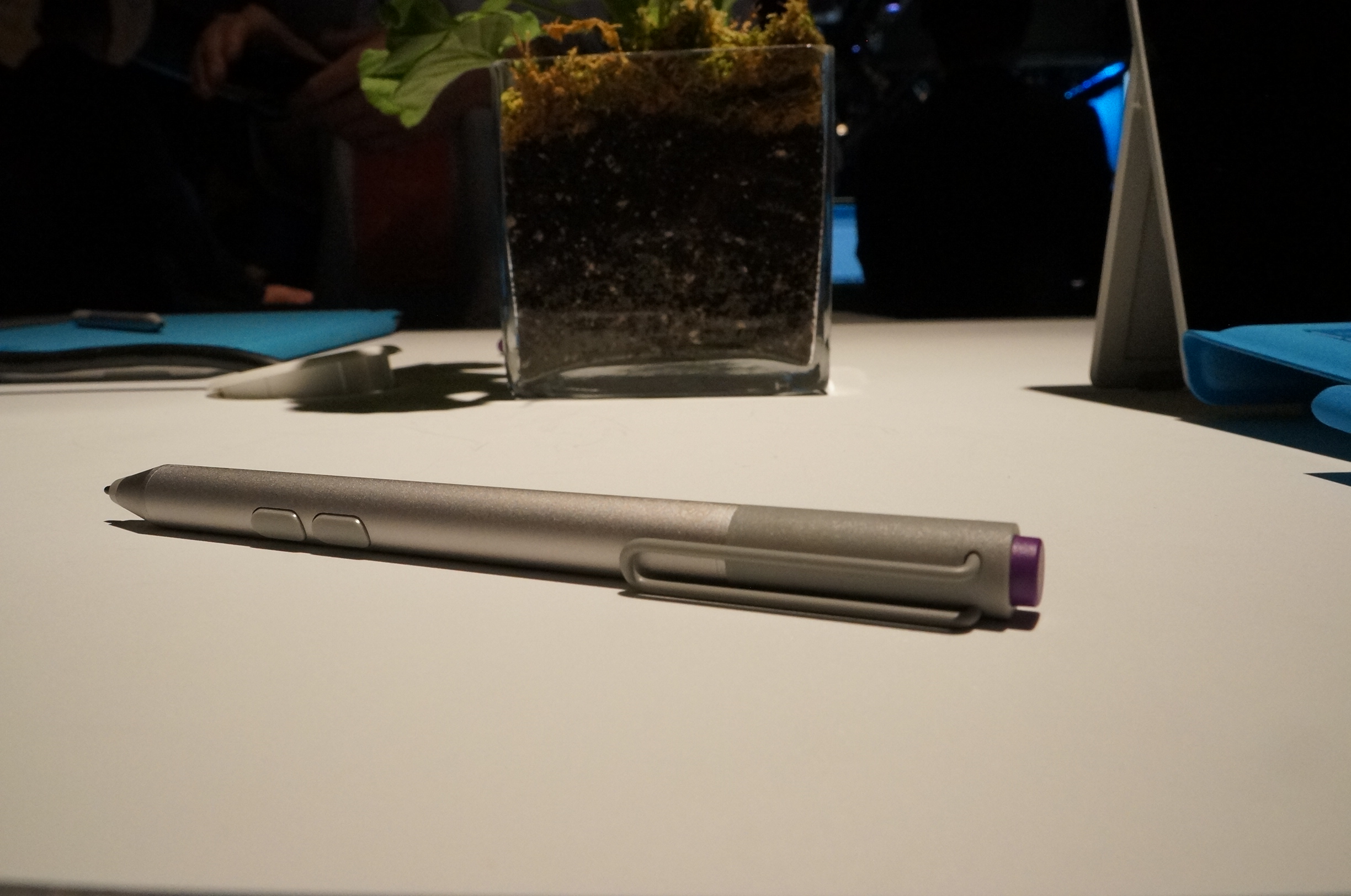Microsoft Surface Pro 3 Hands On Impressions
We go hands-on with Microsoft's newest Surface Pro machine.
Microsoft today unveiled a brand new Surface Pro, the third iteration of this machine since the line was introduced three years ago. While the world thought we’d be getting a Surface Mini, Microsoft surprised everyone by revealing just one tablet, a refresh of a product that just came out at the end of October. The way Microsoft was talking today, it sounds like this is the Surface Pro the folks at Redmond have been dreaming of and trying to execute since day one. The company says this device has been "three years in the making" and that previous iterations weren’t quite right. Now, of course, Microsoft believes that the Surface Pro is finally what it’s supposed to be: a device that removes the "laptop or tablet" conflict and gives you two devices in one.
First and foremost is the fact that this Surface is thinner than any other we’ve seen so far. It’s also larger, though. While Microsoft stuck to the 10.6-inch form factor in the past, the company is jacking things up a notch with the Surface Pro 3. This time, we’ve got a 12-inch display with a 2160x1440 resolution. The aspect ratio is 3:2, which Microsoft says is a more "natural" size for viewing content on a tablet. We don’t know about that. The device might weigh less than a MacBook Air, but it’s still heavier than an iPad Air, and holding it in portrait mode is a little cumbersome for our tastes. Really, we wouldn’t want to be reading on the Surface Pro 3 while lying in bed or on the couch. It would really need to be on your lap, making use of the kickstand. It’s light, but it’s not light enough to use unassisted with one hand.
This was less of an issue with the Surface Pro 2 because it measured only 10.6 inches and weighed in at around 675g*. It was a bit more portable, and therefore, you didn’t feel the need to set it down all the time. But the Surface 2 Pro was not without its problems in form factor. It had that pesky kickstand with a limited range of motion. So, yes, while it was more portable, you were limited to just a couple of positions when you want to set the Surface Pro 2 down. While the Surface Pro 3 might lose out in terms of size, it’s got a brand new kickstand to ensure comfort no matter where you use it. We might not be able to see ourselves holding this thing one-handed sitting up in bed, but we could see ourselves using the 150 degree kickstand to browse the web while the tablet sits on our lap. Really, this new and improved kickstand is what saves the new size from being too much of a deal breaker. The hinge is smooth, with the right amount of stiffness (to ensure it stays put) and the new TypeCover locks onto the tablet bezel via magnets to ensure a nice stable base if you do want to break out the kickstand and do some typing.
This is the world’s thinnest machine based on Intel’s Core i-series of chips (or so Microsoft claims), even with the cover. Part of that meant fitting everything into the smallest package possible. To keep things nice and slim, Microsoft packed the components in nice and snug and has redesigned the fan, making it 30 percent more efficient. The company also reinvented the fin to radially emit air throughout a vent that runs around almost the entire tablet. This allows for quiet cooling without any blowing air as you use the use the machine. The Surface Pro 3 also boasts the thinnest optical stack every built on a device of this size. This helps keep things slim but also comes into play with the pen (more on that later). The end result is a 9.1mm thin device. For reference, Apple’s MacBook Air ranges from 3mm at its thinnest to 17mm at its thickest, and the iPad Air is 7.5mm thick.
Microsoft laid it on thick during the announcement that folks want a device that’s thin, light but will last all day. This was mentioned multiple times throughout the event. So what does Microsoft consider ‘all day battery’? The company is claiming nine hours of battery, but (unfortunately) Redmond stopped short of putting a figure on the battery capacity. We’re currently charging that bad boy up (Microsoft gave us the device already partly charged and out of box) so we’ll update you guys and let you know how it fares after a full day of usage. We do find it a bit disappointing that the company didn’t share the battery capacity, particularly because it was talked about so much during the event itself.
Microsoft has also redesigned the TypeCover. There’s a new trackpad, which should please users annoyed by the last one. Even Microsoft knew that one was bad. The company made it 68 percent bigger, improved precision and reduced drag. This version of the TypeCover also sees the return of the clicking, which was lost in the Surface Pro 2’s TypeCover. It’s better, but it’s still not great. Especially since we view this as more a laptop-replacement than a tablet. The keyboard and trackpad are pretty important ingredients.
We had a much better time navigating with the pen, which is extremely precise and very comfortable to hold. Microsoft spent a lot of time talking about how it’s supposed to feel like a real pen, how it’s weighted to feel like a real pen. That effort shows when you use the Surface Pro 3 with the pen. It’s not heavy or unwieldy, nor is it too slim. Microsoft has added another button (so now you have one for capture, and one for erase), and there’s also a clicker on top that allows you to wake the tablet from sleep and take you directly to OneNote. Another double click of that button sends your notes to the cloud.
Get Tom's Hardware's best news and in-depth reviews, straight to your inbox.
The display also contributes to the positive tablet/stylus experience. That super-thin optical stack we mentioned earlier goes a long way to reducing parallax. If you’ve ever written on a tablet before, you’ve probably noticed that no matter how precise the stylus is, or how comfortable it is in your hand, the experience is kind of ruined by the fact that the pen nib is resting on glass, and the actual writing or “ink” is happening underneath that glass. It’s probably not much in terms of distance, but the gap can look as big as a couple of millimeters. Microsoft’s thin optical stack reduces the gap you see between pen and “ink” which means there’s hardly any lag on the tablet itself or in your brain, when you’re watching what you’re writing. This is such an amazing improvement. The pen is attached to the TypeCover via a small holster. Microsoft ditched the magnetic attachment it used with the old pen and TypeCover (the magnets weren’t very strong), but this solution isn’t perfect either. The holster is glue on to the cover and because it sticks out, we’re afraid it might tear off if the device is being pulled in and out of a bag repeatedly each day (say if you were using it at school). Perhaps Microsoft knew about this potential wear-and-tear, and has already priced replacement pen loops at $5. Overall, the pen is one of the highlights of the Surface Pro 3 for us so far.
The Surface Pro 3 is wrapped in magnesium, which gives it a subtly more rough feel than competing aluminum products. It’s got square edges that slope gently towards the back of the device leaving plenty of room for the charging port (new design there, too), one USB 3.0 port, a mini DisplayPort, a volume rocker, and a headset jack. Buried under the kickstand is a MicroSD card reader, and the front of the device is home to a Windows key that can be used to bring you back to that Windows 8 interface.
Our biggest beef with the Surface Pro 3 is the fact that the TypeCover is not included and costs about $130 to buy separately. The Surface Pro 3 includes a pen, and replacements cost $50. Microsoft yesterday talked about removing the conflict between laptop and tablet. It wanted to stop people having to decide between tablet or laptop when they walk into a store. By not selling the TypeCover with the Surface Pro 3 itself, they’re skewing the device more toward tablet than laptop. Would including the TypeCover really be so hard? It might drive the price up a bit, but it's better than trying to sell people on an $800 tablet that is also a laptop but can't be a laptop until you buy the necessary accessory.
For us, the bottom line is that the Surface Pro 3 functions best as an ultrabook that can turn into a Windows 8 tablet when you want as opposed to a tablet that can also function as a laptop. It's a beautiful machine. The hardware is solid, and the full experience is wonderful when you have all the necessary accessories. However, as it stands, customers going in to buy the device are will have to a significant amount more to get the laptop functionality at all. As a package, the hardware is very promising and the experience is good. On its own? It’s just a really nice Windows 8 tablet that lacks a keyboard for any type of productivity tasks.
This problem is, obviously, solved by purchasing the TypeCover when you buy the Surface (we’ll admit that as much as we love the pen, it’s not as essential as the keyboard). The base model is priced at $800, plus $130 for the cover. That's $930 before tax. Not cheap, in other words. Microsoft was fine selling the Kinect and the Xbox One as a bundle because it believed Kinect was integral to the Xbox One experience. It did this despite cries of, "It's too expensive." Microsoft is selling the Xbox One and Kinect separately now, but only because customers asked for it. We'd like to think that is why Redmond is selling all these Surface Pro 3 components separately -- to give consumers the choice when it comes to what hardware they want to buy. But really, we can't help but feel Microsoft is sacrificing a key part of the Surface Pro 3 experience to keep the price tag from looking too scary.
*The Surface 2 weighs in at 675g but the Surface Pro 2 weighs 900g, as rey_nolds, pointed out. However, we stick by our original assessment that, in terms of size, the Surface Pro 3 feels a lot more awkward in one hand than the Surface Pro 2 we have on hand.
Follow Jane McEntegart @JaneMcEntegart. Follow us @tomshardware, on Facebook and on Google+.

Jane McEntegart is a writer, editor, and marketing communications professional with 17 years of experience in the technology industry. She has written about a wide range of technology topics, including smartphones, tablets, and game consoles. Her articles have been published in Tom's Guide, Tom's Hardware, MobileSyrup, and Edge Up.
-
Wisecracker Intel Core i3, 64 GB storage and 4 GB of RAM—$799Reply
Intel Core i5, 128 GB storage and 4 GB of RAM—$999
Intel Core i5, 256 GB storage and 8 GB of RAM—$1,299
Intel Core i7, 256 GB storage and 8 GB of RAM—$1,549
Intel Core i7, 512 GB storage and 8 GB of RAM—$1,949
edit:
Surface Pro Type Cover—$129.99
Additional Surface Pen—$49.99
Additional 36W Power Supply—$79.99
Additional Pen Loop—$4.99
Docking Station for Surface Pro 3—$199.99
Surface Ethernet Adapter—$39.99
-
Lazze who needs a Surface before Windows has managed the DPI problems in desktop mode? If you only intend to run in metro mode, buy an RT - else wait.... or get a MBA with an OS the handles the resolution.Reply -
stevozilik I'm a bit disappointed by this review to be honest.Reply
First you get fundamental facts wrong - Surface Pro 2 weight is 907g which makes the new one lighter and thus potentially easier to use as tablet.
Most of the article is complaining (about mostly secondary issues like how it's sold or that you don't know the batter capacity yet) even though you also say "experience is wonderful when you have all the necessary accessories".
What is the overall result - is a good device/bad device. That's what I want to know, not your opinions about how Microsoft should me selling the accessories and XBox -
Ghoul ReplyI'm a bit disappointed by this review to be honest.
First you get fundamental facts wrong - Surface Pro 2 weight is 907g which makes the new one lighter and thus potentially easier to use as tablet.
Most of the article is complaining (about mostly secondary issues like how it's sold or that you don't know the batter capacity yet) even though you also say "experience is wonderful when you have all the necessary accessories".
What is the overall result - is a good device/bad device. That's what I want to know, not your opinions about how Microsoft should me selling the accessories and XBox
Indeed. Mediocre article -
jhansonxi On Reddit, artists are complaining about the pen and touchscreen. 256 levels of pressure sensitivity is a major step down from the SPro2's 1024 for drawing:Reply
http://www.reddit.com/r/technology/comments/261bvo/microsoft_announces_the_surface_pro_3/chmq73i -
ubercake For that much money, it should include the keyboard.Reply
Jane, can you tell us how hot the tablet gets while you're doing the additional battery testing? I'm wondering if there will be a real hot spot especially on the i7.
These tablets seem really great, but when I can buy a new i3 laptop for $300 and some change or pay $800 for this new tablet, I'll probably go for the laptop. I do like where they're heading with these tablets though. -
doomtomb I don't care how many magnets the TypeCover has in it, there's no way it's worth $130. That's more expensive than my backlit mechanical keyboard which has way higher build quality than this piece of felt. $40 max - consumers revolt or else the price gouge continues.Reply -
heygeo ReplyI'm a bit disappointed by this review to be honest.
First you get fundamental facts wrong - Surface Pro 2 weight is 907g which makes the new one lighter and thus potentially easier to use as tablet.
Most of the article is complaining (about mostly secondary issues like how it's sold or that you don't know the batter capacity yet) even though you also say "experience is wonderful when you have all the necessary accessories".
What is the overall result - is a good device/bad device. That's what I want to know, not your opinions about how Microsoft should me selling the accessories and XBox
really not a review, more of an "at a glance", but in defense of Jane, Microsoft is trying to convince us that this device can replace both a laptop and a tablet, this opens them up to be compared against both... heavier than an ipad air, lack of included keyboard vs ultrabooks... personally i like it but until its thinner\lighter than a pure tablet and is comparably priced to a touch screen ultrabook it should be called out. -
southernshark Magnesium is not stronger than aluminum, but it is lighter. I seriously doubt this is made of pure magnesium though. It is most likely an aluminum/magnesium alloy, which is an alloy that is gaining a lot of ground lately in many different fields (including assault rifles).Reply

